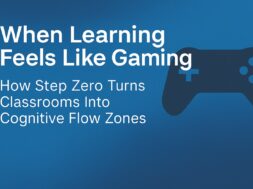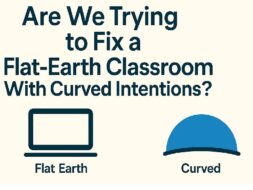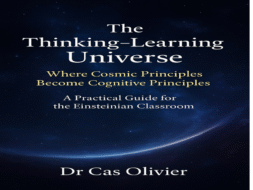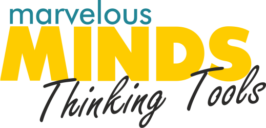Progressing from DARE2TEACH Differently to DARE2LEARN Differently, how do we as teachers equip students with the cognitive skills to make sense of a world flooded with information?
This is my line of thinking in a series of DARE2LEARN Differently blogs.
I have seen firsthand that a brain-based approach is not just beneficial but essential. It leads to a transformative learning experience, where students are engaged, curious, and motivated to explore. The result is students who are not only informed but equipped with the cognitive skills to make sense of a world flooded with information.
In today’s fast-paced world, understanding how the brain learns is essential for effective teaching. Brain-based teaching and learning tap into the natural processes of how we absorb, process, and retain information. By using methods aligned with these cognitive processes, teachers can make learning more engaging, meaningful, and memorable. This approach emphasizes critical thinking, problem-solving, and adaptability—skills that are crucial in an era of endless information. When teachers understand and apply brain-based strategies, they’re not only imparting knowledge but also empowering students to navigate and make sense of the world around them. It’s about fostering a love for learning and the skills to think independently, ensuring students are equipped for lifelong success.
Today, information is everywhere, just a click away. With a quick search, you can find answers to almost any question. This limitless access to knowledge is both a gift and a challenge. While it’s easier than ever to access information, the real challenge lies in making sense of it all, thinking critically, and applying it effectively.
In a world overflowing with information at our fingertips, it’s more important than ever for teachers to empower students not just to absorb facts but to think critically and learn independently.
The role of education today goes beyond imparting knowledge—it’s about equipping students with the tools and confidence to navigate, question, and make sense of the endless information available to them.
Our role as teachers changes from feeding information tohelping students develop the skills to analyse, understand, and apply what they learn in meaningful ways. This approach challenges traditional methods, fostering a learning environment where students are encouraged to think, explore, and take ownership of their educational journey.
Inn a world overflowing with information, the focus should shift from simply knowing facts to understanding how to use those facts in meaningful ways. Here’s how educators, students, and lifelong learners can navigate this ocean of information more effectively.
The Problem with Information Overload
With so much knowledge readily available, it’s easy to fall into the trap of surface-level understanding. When we know we can find answers instantly, we might rely on quick fixes and lose the skills to dig deeper or think independently. This reliance on instant answers can create shallow learning, where we remember what we looked up but don’t truly understand it or know how to apply it.
Why Thinking Tools Matter
Information is abundant, but thinking is a skill that needs to be cultivated. Critical thinking tools can help learners organize information, ask better questions, and draw connections between seemingly unrelated ideas. Here are some reasons why thinking tools are crucial in this age of abundant information:
Discernment and Reliability: Not all information is accurate. Critical thinking helps us assess sources, distinguish facts from opinions, and identify credible information.
Depth Over Speed: While we can quickly find answers, taking time to explore and analyse information fosters a deeper understanding. Thinking tools like mind maps, comparison charts, and problem-solving frameworks encourage learners to explore topics more thoroughly.
Connecting the Dots: Real knowledge doesn’t come from isolated facts but from seeing patterns and connections. Thinking tools enable learners to see the bigger picture, connect ideas across disciplines, and create innovative solutions.
Lifelong Learning Skills: Facts change, and new information arises every day. By focusing on thinking skills, learners can adapt to new information, stay curious, and remain effective problem solvers long after leaving the classroom.
How to Use Thinking Tools to Engage with Information Differently
Ask the Right Questions: Instead of asking "What is the answer?" start asking "Why is this true?" and "How does this connect to what I already know?" By training ourselves to ask deeper questions, we move from passive consumption to active engagement with information.
Challenge Your Assumptions: Don’t just take information at face value. Use thinking tools like "5 Whys" or the "Socratic Method" to explore the underlying reasons behind facts or concepts. This kind of questioning not only deepens understanding but also uncovers hidden assumptions that might shape our thinking.
Organize and Structure Information: Use visual thinking tools like concept maps, flowcharts, and Venn diagrams to organize information logically. Structuring ideas visually helps in retaining information better and seeing connections between different topics.
Practice Reflection: Take time to reflect on what you’ve learned and how it fits into the bigger picture. Reflection encourages learners to revisit information, assess its relevance, and apply it to their own lives.
Empowering Students in the Age of Information Abundance
For students, it’s tempting to rely on quick answers and avoid the hard work of thinking. However, by incorporating thinking tools into education, teachers can empower students to become independent thinkers. Instead of focusing solely on memorization, teachers can guide students to analyse, question, and apply what they learn in various contexts.
Students need to be empowered to foster a growth mindset. When students see challenges as opportunities to think creatively, they become more resilient and willing to explore complex ideas. Rather than fearing the unknown, they approach new information with curiosity and confidence.
Learning Beyond the Classroom
In today’s world, learning isn’t confined to school walls; it’s a lifelong journey. Adults and professionals also benefit from thinking tools. Whether making decisions, solving problems, or innovating in their careers, these tools help individuals approach challenges thoughtfully and strategically. As we navigate the information age, remember that true learning is not about how much we know but about how effectively we think and apply our knowledge. At Learning Designs, we’re here to support this journey with resources, insights, and practical tools to foster critical thinking for learners of all ages.





